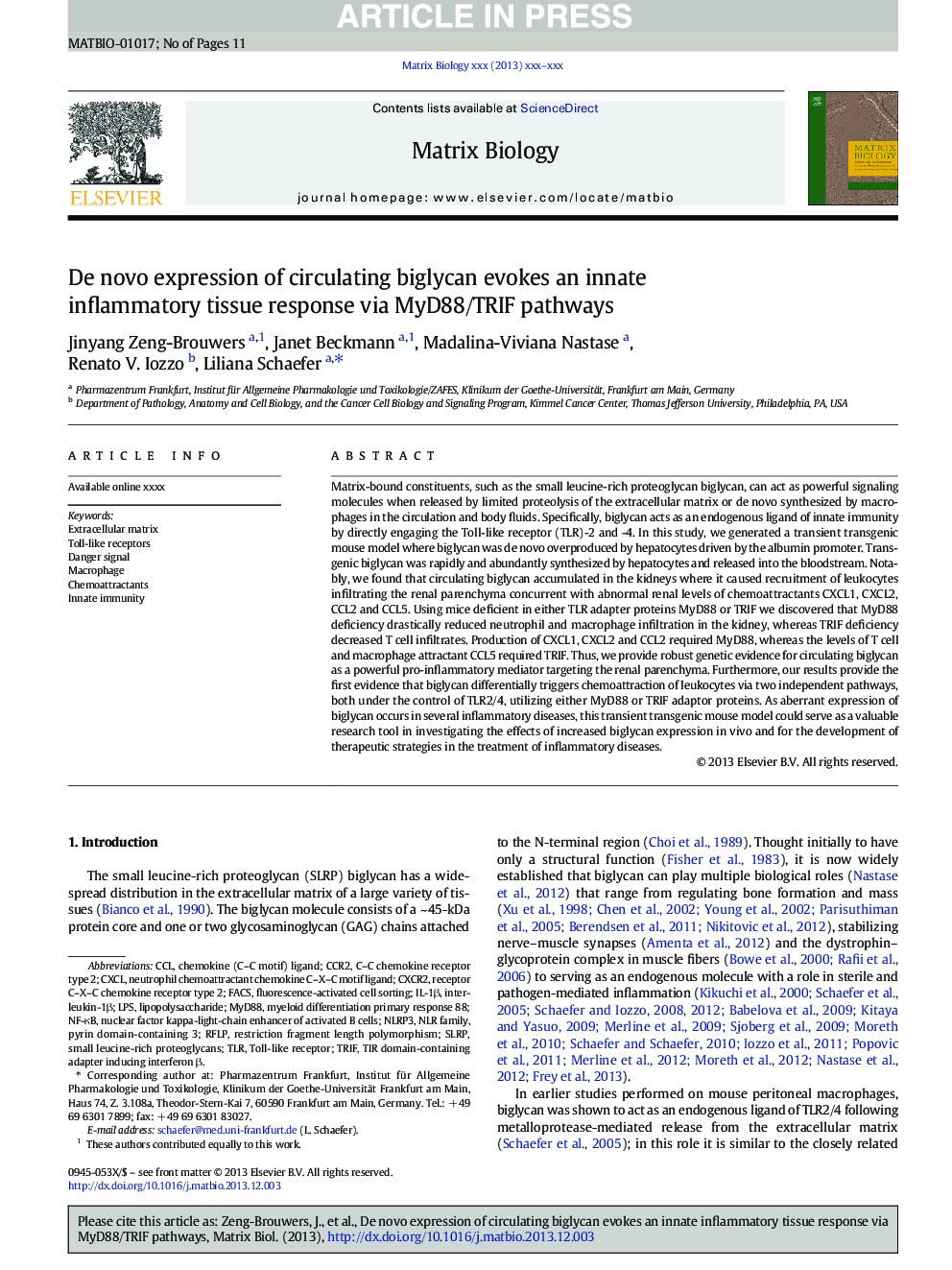| Article ID | Journal | Published Year | Pages | File Type |
|---|---|---|---|---|
| 8455354 | Matrix Biology | 2014 | 11 Pages |
Abstract
Matrix-bound constituents, such as the small leucine-rich proteoglycan biglycan, can act as powerful signaling molecules when released by limited proteolysis of the extracellular matrix or de novo synthesized by macrophages in the circulation and body fluids. Specifically, biglycan acts as an endogenous ligand of innate immunity by directly engaging the Toll-like receptor (TLR)-2 and -4. In this study, we generated a transient transgenic mouse model where biglycan was de novo overproduced by hepatocytes driven by the albumin promoter. Transgenic biglycan was rapidly and abundantly synthesized by hepatocytes and released into the bloodstream. Notably, we found that circulating biglycan accumulated in the kidneys where it caused recruitment of leukocytes infiltrating the renal parenchyma concurrent with abnormal renal levels of chemoattractants CXCL1, CXCL2, CCL2 and CCL5. Using mice deficient in either TLR adapter proteins MyD88 or TRIF we discovered that MyD88 deficiency drastically reduced neutrophil and macrophage infiltration in the kidney, whereas TRIF deficiency decreased T cell infiltrates. Production of CXCL1, CXCL2 and CCL2 required MyD88, whereas the levels of T cell and macrophage attractant CCL5 required TRIF. Thus, we provide robust genetic evidence for circulating biglycan as a powerful pro-inflammatory mediator targeting the renal parenchyma. Furthermore, our results provide the first evidence that biglycan differentially triggers chemoattraction of leukocytes via two independent pathways, both under the control of TLR2/4, utilizing either MyD88 or TRIF adaptor proteins. As aberrant expression of biglycan occurs in several inflammatory diseases, this transient transgenic mouse model could serve as a valuable research tool in investigating the effects of increased biglycan expression in vivo and for the development of therapeutic strategies in the treatment of inflammatory diseases.
Keywords
NF-κBnuclear factor kappa-light-chain enhancer of activated B cellschemokine (C–C motif) ligandchemoattractantsNLRP3small leucine-rich proteoglycansSLRPCXCLCXCR2CCLCCR2TLRIL-1βRFLPMYD88LPSFACSTRIFmyeloid differentiation primary response 88Innate immunityInterleukin-1βToll-like receptorfluorescence-activated cell sortingDanger signallipopolysaccharideExtracellular matrixMacrophagerestriction fragment length polymorphismToll-like receptors
Related Topics
Life Sciences
Biochemistry, Genetics and Molecular Biology
Cancer Research
Authors
Jinyang Zeng-Brouwers, Janet Beckmann, Madalina-Viviana Nastase, Renato V. Iozzo, Liliana Schaefer,
